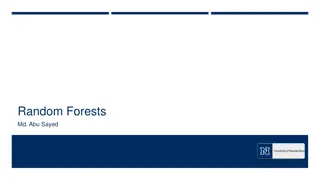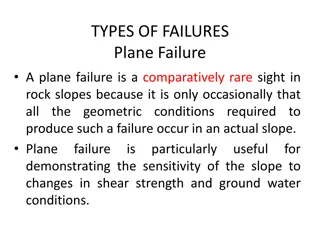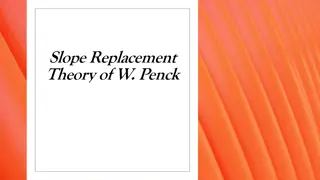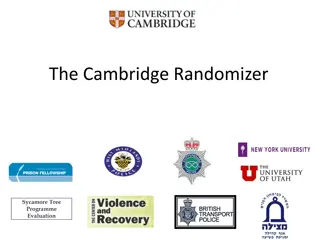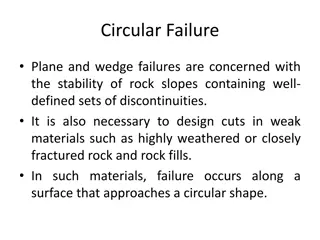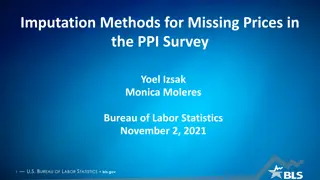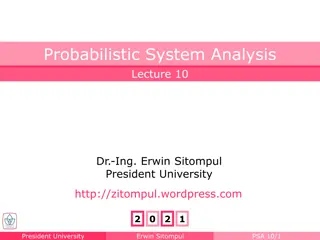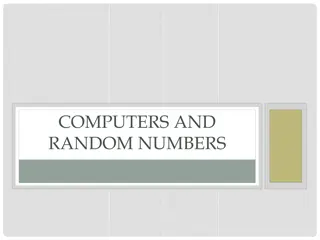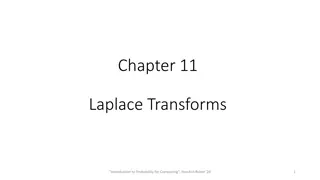Understanding Random Slopes in Data Analysis
Exploring the impact of grand-mean and group-mean centering on intercept interpretation with random slopes, as well as variations in slope/intercept covariance. Differentiating between fixed and random coefficients, and the effects of adding group mean as a Level 2 variable. Delving into within vs. between group centering, and how fits differ with and without random slopes.
Download Presentation

Please find below an Image/Link to download the presentation.
The content on the website is provided AS IS for your information and personal use only. It may not be sold, licensed, or shared on other websites without obtaining consent from the author. Download presentation by click this link. If you encounter any issues during the download, it is possible that the publisher has removed the file from their server.
E N D
Presentation Transcript
Stat 414 Day 10 Random slopes (5.1)
This week HW 5 How to knit Performance to performance variation Project proposals Office hours Today 1-2 Tomorrow econference 8:30-9:30, conf call 9:30- 12
Last Time Grand mean centering Affects interpretation of intercept With random slopes, affects variation of intercept, as well as slope/intercept covariance Group mean centering Centering within context Affects the slope (total effect vs. within effect)
Last Time Have removed some school level variation Grand-mean centering vs. Group-mean centering (e.g., PctFamily in county) Fixed coefficient: Slopes and intercepts similar to each other but intercepts very different from raw data Random coefficient: fixed slope component will differ with group-mean centering
Special Case: Adding group mean as Level 2 variable Level 2 variable raw or grand-mean centered: intercept differs, slopes won t change too much, unless Level 1 variable group-mean centered; Level 2 slopes have different interpretations
Within vs. Between Groups Group mean centering (Level 1) PctBush = 57.5 + .89(PctFamily- ??) + 2.11 ?? .89 is county-level (within state) effect 2.11 is between state effect Represents state effect and state composition Use if care about: Relative size of X vs. mean X effects; primarily the Level 2 effect Grand mean centering (Level 1) PctBush = 57.5 + .89(PctFamily- ?) + 1.22 ?? .89 is county-level (within state) effect 1.22 is additional contextual effect at state level (between within) after adjusting for county (two counties with same PctFamily but located in two different states)
Within vs. Between Groups Within groups Between groups (regressing group means of PctBush on group means of PctFamily) familymeans = aggregate(bushdata$PctFamily, list(bushdata$state_po), mean) bushmeans = aggregate(bushdata$PctBush, list(bushdata$state_po), mean) summary(lm(bushmeans$x ~ familymeans$x))
Within vs. Between Groups Without random slopes, these fits are the same But do differ with random slopes (p. 88)
Last Time it is clear that centering, whether with grand means or with group means, should always be used in multilevel regression Grand-mean centering is simpler and more common Group-mean centering separates the individual and group effects, focuses on contextual (Level 2) effects
Day 10, Example 3 langPOST in different classes (schools) verbal__IQ was centered But then some observations remove With new dataset, computed group means Grand mean centered
Table 4.2 with centered IQ Table 4.2 with standardized IQ and lang
Table 4.2 with centered IQ ???????? = ?0?+ ?1??_???? Table 4.4 including IQ and mean IQ ?0?= ?00+ ?2???????+ ??? School level variance goes down
Example 3 (a) Slope of within groups equation? 2.45 ( effect of increase in student IQ) (b) Additional contribution? Grand-mean centered: 1.28 (given student IQ, but school IQ one unit higher) t = 4.906 (c) group-mean centered: 3.74 Change in school mean langPOST if increase school mean IQ by one (vs. 3.67)
Example 3 (f) Allow IQ_verb to have random slopes
Example 3 Slope/Intercept correlation Negative Schools with large intercepts (avg lang for students with average IQ in school with average IQ) have smaller slopes (within class IQ effect) but still stay ahead of schools with lower intercepts, for this range of IQ scores
Allowing for random slope ???????? = ?0?+ ?1???_???? Table 4.4 including IQ * mean IQ ?0?= ?00+ ?2???????+ ??? ?1?= ?10+ ?3???????+ ?1?
p. 87 In cases where the explanation of the random effects works extremely well, one may end up with models with no random effects at level two random intercepts, slope have zero variance.. Omitted.. The resulting model may be analyzed just as well with OLS regression analysis within group dependence has been fully explained by the available explanatory variables/interactions (no more dependence in the residuals)
Note Have already discussed 5.4 and 5.5, Ch. 6
Null model ICC = 0.224 Table 4.2 with centered IQ Residual ICC = 0.196




